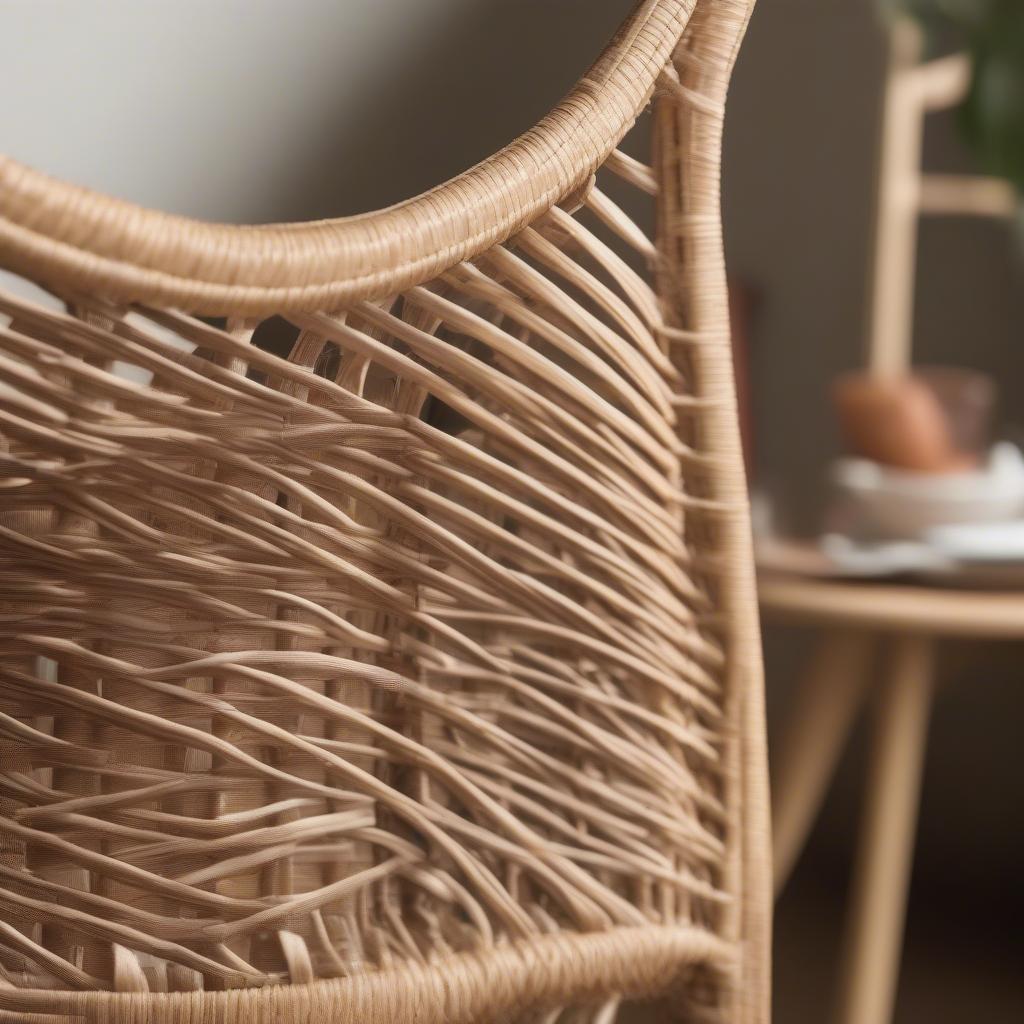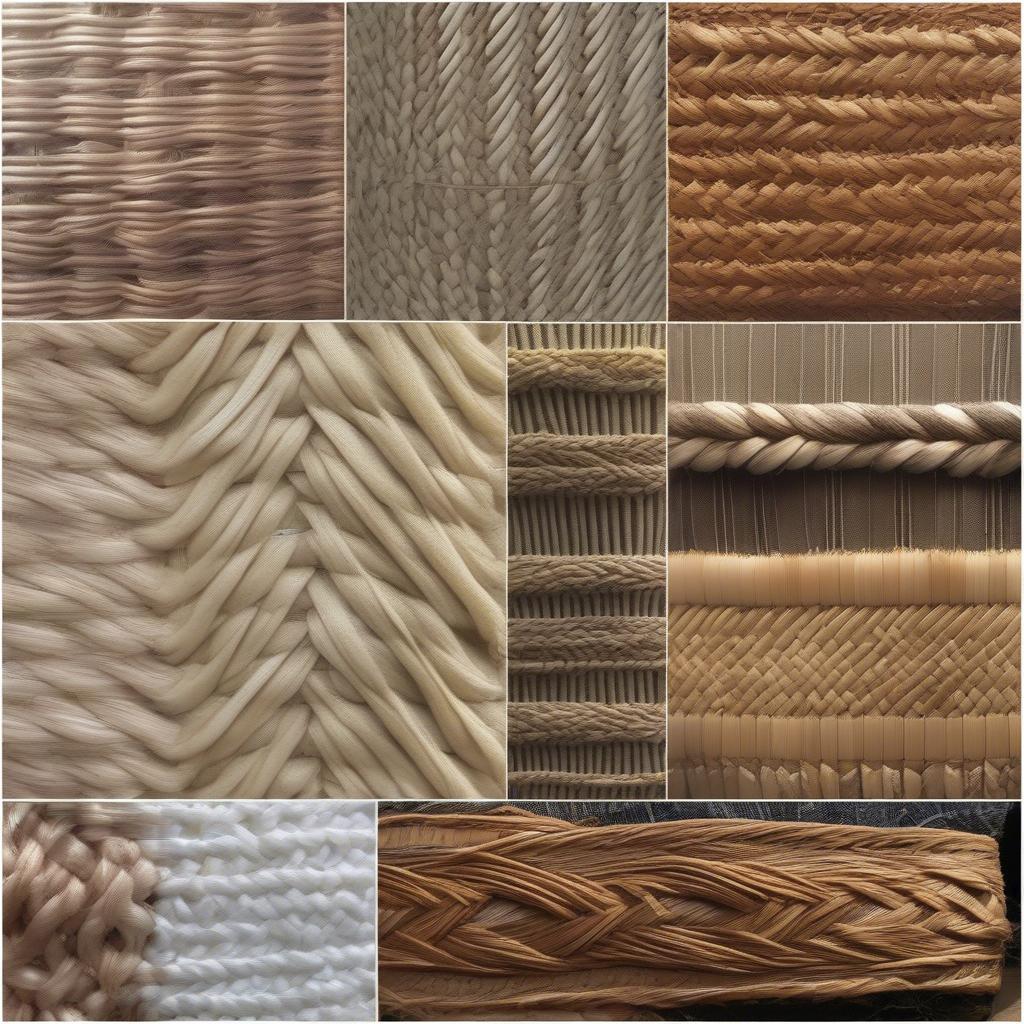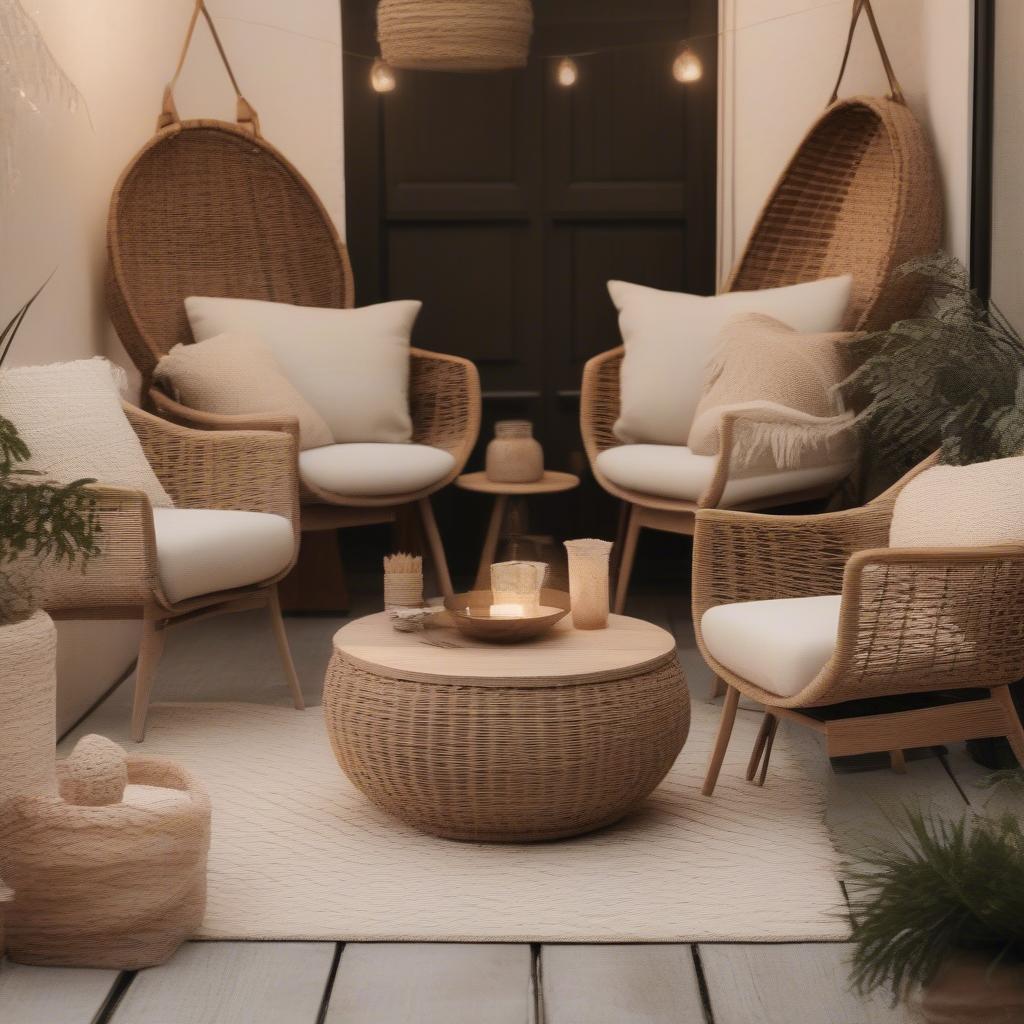Weave Chair
Weave Outdoor Chair Backs: A Guide to Materials, Techniques, and Inspiration
Weave Outdoor Chair Backs offer a unique blend of comfort, style, and durability, transforming any patio or garden into a relaxing oasis. From traditional wicker and rattan to modern synthetic materials, choosing the right weave for your outdoor chairs can significantly impact their longevity and aesthetic appeal. Let’s delve into the world of woven chair backs, exploring various materials, weaving techniques, and design inspiration to help you make the perfect choice for your outdoor space. how to weave chair seat and back
Choosing the Right Material for Your Weave Outdoor Chair Backs
The material you choose for your weave outdoor chair backs will determine not only the look and feel of the chair but also its resistance to the elements. Natural fibers like wicker and rattan offer a classic, organic aesthetic but require more care and maintenance. Synthetic materials, on the other hand, are incredibly durable and weather-resistant, making them a popular choice for outdoor furniture.
Natural Fibers: Wicker and Rattan
- Wicker: Wicker refers to the weaving process, not a specific material. Wicker can be made from a variety of natural materials, including rattan, willow, bamboo, and seagrass. Wicker chair backs offer a timeless appeal and add a touch of natural elegance to any outdoor setting.
- Rattan: Rattan is a strong, flexible vine that is commonly used for wicker furniture. Rattan chair backs are known for their durability and intricate designs. They are also lightweight and easy to move around.
Synthetic Fibers: Resin and HDPE
- Resin Wicker: Resin wicker, also known as all-weather wicker, is made from synthetic polyethylene (PE) or high-density polyethylene (HDPE) fibers. These materials are highly resistant to UV rays, moisture, and temperature fluctuations, making them ideal for outdoor use. Resin wicker chair backs come in a wide range of colors and styles, offering versatility and low maintenance.
- HDPE (High-Density Polyethylene): HDPE is a durable and weather-resistant plastic that is commonly used for outdoor furniture. HDPE chair backs are strong, easy to clean, and can withstand harsh weather conditions.
 Natural Fiber Woven Outdoor Chair Backs: Rattan and Wicker
Natural Fiber Woven Outdoor Chair Backs: Rattan and Wicker
Exploring Weaving Techniques for Outdoor Chair Backs
Different weaving techniques create unique patterns and textures, adding visual interest to your outdoor chair backs. From the classic herringbone weave to more complex designs, understanding the various weaving techniques can help you appreciate the craftsmanship and artistry involved in creating these pieces.
Herringbone Weave
The herringbone weave is a popular choice for chair backs due to its strength and visual appeal. This technique creates a distinctive V-shaped pattern that adds a touch of classic elegance.
Open Weave
An open weave creates a more airy and lightweight feel, allowing for better ventilation. This is particularly beneficial in hot and humid climates.
Basket Weave
The basket weave, characterized by its alternating over-under pattern, offers a simple yet charming aesthetic. It’s a versatile weave that works well with both natural and synthetic materials.
 Weaving Techniques for Outdoor Chair Backs: Herringbone, Open Weave, and Basket Weave
Weaving Techniques for Outdoor Chair Backs: Herringbone, Open Weave, and Basket Weave
Designing Your Outdoor Space with Woven Chair Backs
Weave outdoor chair backs can be incorporated into a variety of outdoor design styles, from traditional to contemporary. Consider the overall aesthetic of your outdoor space when choosing the material, color, and weaving pattern for your chairs.
Creating a Cozy Retreat
Woven chair backs can create a warm and inviting atmosphere in your outdoor space. Pair them with comfortable cushions and throws for a cozy and relaxing retreat.
Adding a Touch of Rustic Charm
Natural fiber woven chair backs, like wicker and rattan, can add a touch of rustic charm to your patio or garden. Combine them with natural wood furniture and earthy tones for a cohesive look.
“When choosing woven chair backs, consider the climate. Natural fibers are beautiful but require more care in humid environments. Synthetics offer durability and low maintenance,” advises Sarah Miller, Lead Designer at Outdoor Living Designs.
 Design Inspiration for Outdoor Spaces with Woven Chair Backs: Cozy Retreat and Rustic Charm
Design Inspiration for Outdoor Spaces with Woven Chair Backs: Cozy Retreat and Rustic Charm
Conclusion
Weave outdoor chair backs offer a beautiful and functional way to enhance your outdoor living space. By understanding the various materials, weaving techniques, and design considerations, you can choose the perfect woven chairs to complement your style and create a comfortable and inviting outdoor oasis. Consider the climate and your lifestyle when selecting the material for your weave outdoor chair backs, ensuring they remain a beautiful and functional addition to your outdoor space for years to come.
FAQ
-
What is the most durable material for weave outdoor chair backs?
- HDPE and resin wicker are the most durable materials for outdoor use.
-
How do I clean woven chair backs?
- Regular cleaning with mild soap and water is usually sufficient.
-
Are woven chair backs comfortable?
- Yes, with the addition of cushions, woven chair backs can be very comfortable.
-
What is the difference between wicker and rattan?
- Rattan is a material, while wicker refers to the weaving process.
-
Can woven chairs be left outside in the winter?
- While synthetic materials can withstand harsh weather, it’s best to store them indoors during the winter months.
farmhouse basket weave dining chair cover
Common Scenarios:
-
Scenario 1: You live in a coastal area with high humidity. Which material is best for your outdoor chair backs?
- Resin wicker or HDPE would be the best choice due to their resistance to moisture.
-
Scenario 2: You want to create a bohemian-style patio. What type of weave and material should you choose?
- A natural wicker chair with an open weave would complement the bohemian aesthetic.
Further Exploration:
For more information on specific weaving techniques and DIY projects, check out our articles on how to weave chair seats and backs.
Need assistance? Contact our 24/7 customer support Hotline: +84 388 951 999 or visit us at Hanoi, Vietnam or Tech Avenue, Suite 12, San Francisco, CA 94105, USA.
